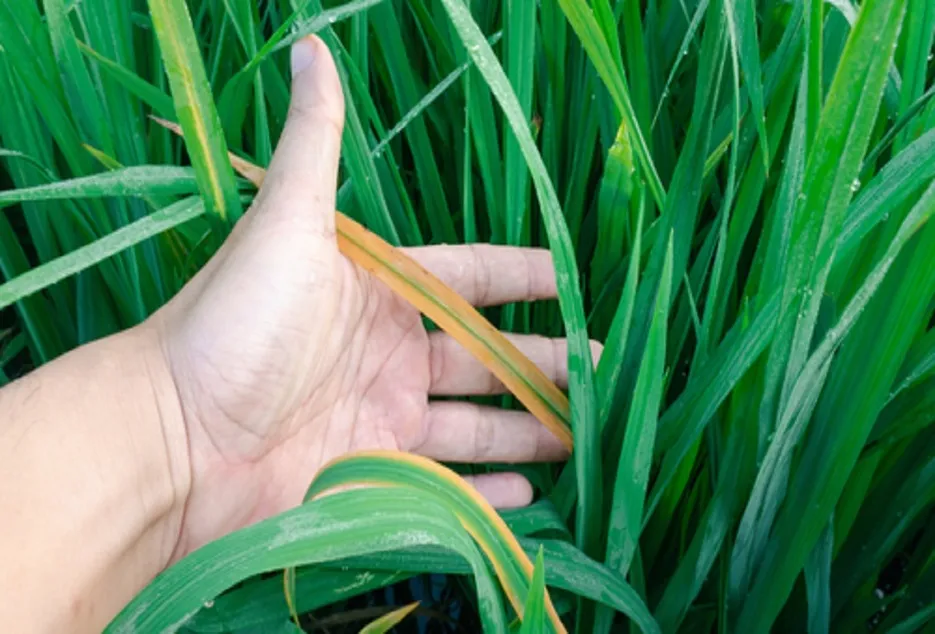 Back
Back

Bacterial leaf blight (BLB)
Bacterial leaf blight (BLB)
Bacterial blight is one of the most serious disease of rice. Yield losses due to bacterial blight ranges between 6-60 % depending on disease severity and cultivar susceptibility. The loss in yield has been attributed due to increase in chaffiness, decrease in grain weight and number of panicles, maximum damaged at heading stage.This disease can occur at tillering to heading stage
_71230_1677490484.png)
Favourable conditions for disease spread
Favourable conditions for disease spread
➥ High relative humidity (>90 %) and moderate temperature (26-30°C) favor the disease development.
➥ Heavy rainfall, light intensity and frequent rainfall favour the outbreak of the disease.
➥ The disease also disperse and spread via water
➥ High dose of nitrogenous fertilizers, and close planting favour the disease.
➥ Presence of weeds, rice stubbles of infected plant work as source of primary infection.
Symptoms of Bacterial Leaf blight
Symptoms of Bacterial Leaf blight
The bacterium induces either wilting of plants or leaf blight.
Seedling wilting or Kresek
Seedling wilting or Kresek
➥ Wilting syndrome known as ‘Kresek’ occurs in the fields causing serious damage. It commonly occurs within 3-4 weeks after transplantation of the crop.
➥ Infection results either in the death of whole plants or wilting of only a few leaves
_41449_1677490485.png)

Leaf Blight
➥ On the leaf blade yellow orange stripes on appear and on leaf .These spots have have a wavy margins and progress towards the leaf base.
➥ The spots can cover the whole blade, turn white and later greyish.
➥ On young lesions, Bacterial fluid milky dew drop can be observed early in the morning




How bacterial diseases are different than others
How bacterial diseases are different than others


Cut a newly infected leaf across and place in a transparent glass container with clear water, After a few minutes, hold the container against light and observe for thick or turbid liquid coming from the cut end of the leaf which called bacterial ooze. This is how you can clearly identify from fungal diseases and nutrition deficiencies.
Recommendations
Recommendations
➥ Use resistant Rice hybrids in Arize brand. Arize 6129 Gold ( 115-120 Days), Arize Tej Gold ( 121-130 Days ) , Arize 6444 Gold and AZ 8433DT ( 131-140 Days), AZ Dhani DT ( 141-145 Days) can be cultivated to reduce losses due to bacterial blight
_77850_1677490487.webp)
_42174_1677490487.png)
➥ Avoid excess use of Nitrogen and spilt the applications over the season.
➥ Apply extra dose of potash along with last dose of nitrogen when weather conditions are favorable.
➥ Keep the field clean. Remove weeds hosts from bunds and channels.
➥ Allow fallow fields to dry in order to suppress disease agents in the soil and plants residues .
➥ Spray copper compounds and antibiotics. Spray combination of copper oxychloride (COC) and Streptocycline provides good control. It will help to avoid any secondary infection.


Thank you for reading this article, we hope you clicked on the ♡ icon to like the article and also do share it with your friends and family now!








